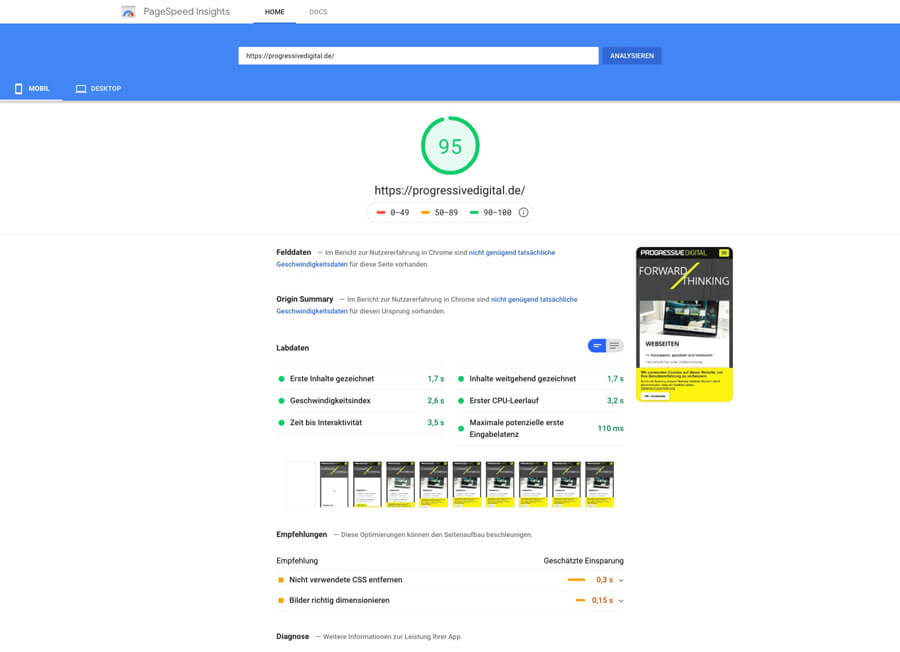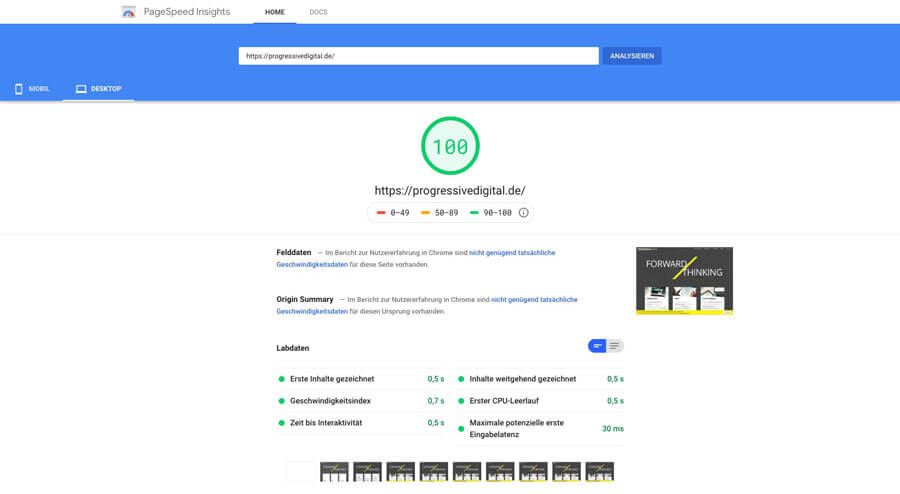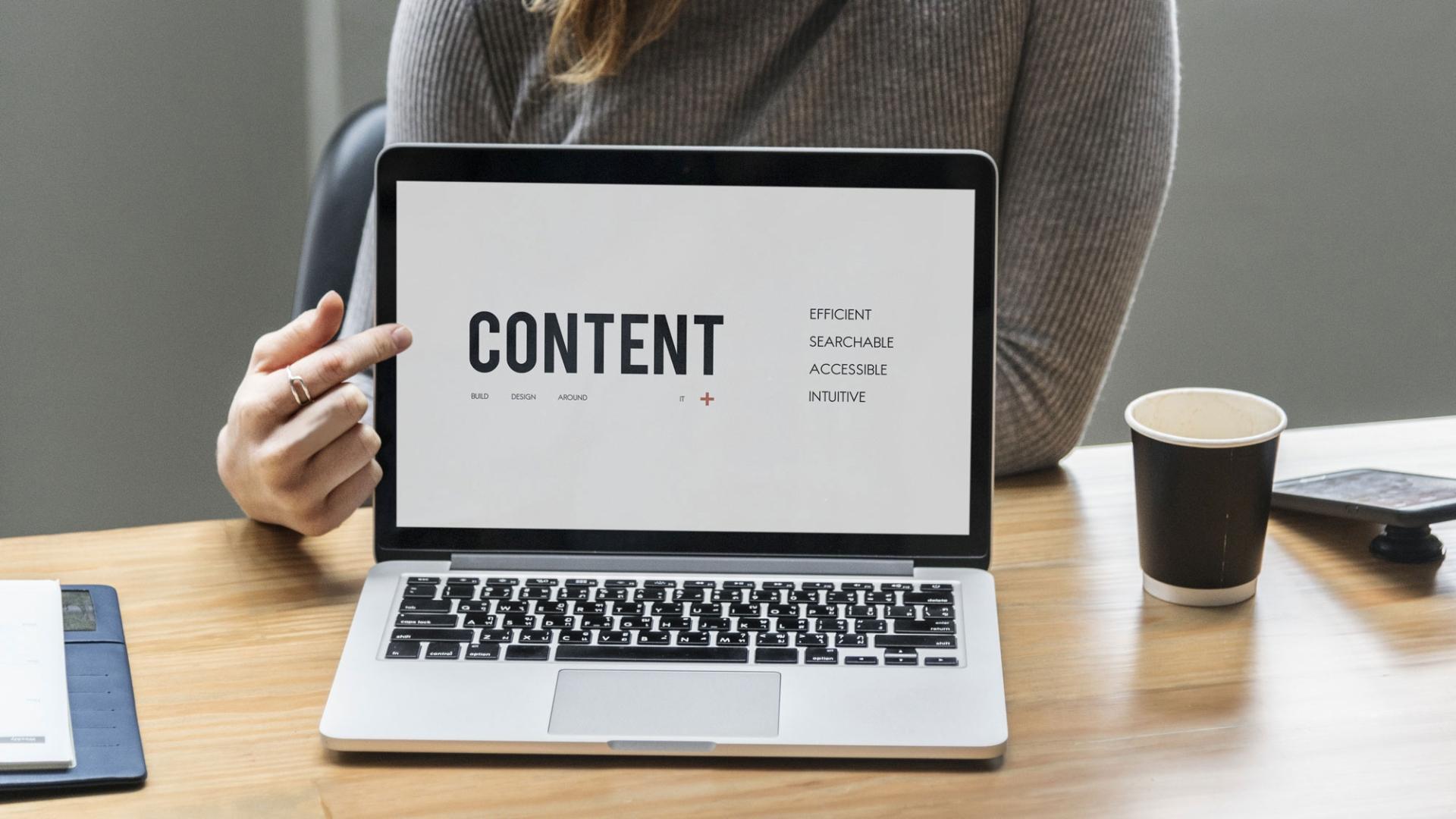What influence does page speed have on the search engine ranking?
Pagespeed determines how long it takes for a website to load completely. The loading time is therefore the time between sending the request and the complete delivery of the requested content on the webpage. According to the Google Search Console, three seconds is already considered too long, meaning that the visitor loses interest. From an SEO perspective, you might initially think that the loading time is not a decisive criterion. Many underestimate the importance of page speed:
Pagespeed plays a role from both the visitor's and the search engine's perspective.
But how important is this ranking factor really? How does Google measure the loading speed of a website? And how does page speed influence our user experience?
Pagespeed and user experience
Long loading times can be extremely detrimental to the user experience. Who hasn't experienced this? The patience span is usually very short.
If someone visits a website that loads quickly and guides them through the pages well, the experience is also much better. As the latest Google study shows, one in two people immediately leave a website that takes more than 3 seconds to load.
Good page speed therefore reduces the bounce rate. The bounce rate describes the proportion of visitors who only access a single page - for example, if the homepage is accessed and then immediately closed again. In German, this is referred to as the bounce rate.
For Google, a high bounce rate means that the website does not generate any further interest and therefore does not appear to be relevant. The loading speed is therefore also an elementary component for SEO.
Generate more attention
By generating a high page speed, you reduce the risk of a high bounce rate.
Page speed factors only make up a small part of search engine marketing. In comparison, links and content are more important. This means that fast websites will not rank better than websites with good content and link building. Nevertheless, pagespeed should not be underestimated and ignored.
Ideally, of course, all factors should be taken into account and continuously optimized. Then, in the best case, you will not only generate attention through good content and link building, but also optimize the site through good performance.
Nobody wants to put visitors off due to long waiting times. Once you manage to get a lot of people to click on your website, poor pagespeed shouldn't ruin it.
Pagespeed Insights
There are several analysis tools to measure the loading speed of a website - for example with PageSpeed Insights. Google Pagespeed Insights shows both the loading speed for the mobile view ...

... as well as for the desktop view.

Influence on SEO
Google distinguishes between slow and fast websites. Pages that take longer than two seconds to load are crawled less frequently by Google. On the one hand, the search engine wants to save its own resources. On the other hand, Google wants to increase the positive user experience.
Since July 2018, the page speed of mobile websites has also been a ranking factor. Desktop pages were already judged by their loading speed before then.
The page speed of a website is very important for the user experience. In most cases, visitors to a website lose interest in waiting any longer after just a few seconds and close the page.
Page speed is very often underestimated and not considered to be that important. However, it not only improves the user experience, but is also an important ranking factor from an SEO perspective. Google only has a certain budget for crawling websites . According to Google, poorly loading pages are therefore crawled less frequently.
There are various measuring stations:
- Time to First Byte (TTFB):
TTFB refers to the time between the website being accessed and the first byte loaded by the web server. - First Contentful Paint (FCP):
FCP refers to the time at which content appears on the website for the first time, so to speak - i.e. when a display element is displayed. - First Meaningful Paint (FMP):
FMP refers to the time at which the user has the feeling that the website is loaded.
If a user has a bad experience with a website - this includes it taking too long to load - the user usually does not visit the website a second time.
For online stores, poor page speed results in a poor conversion rate. If the website loads slowly, the purchase is often abandoned in frustration.
The effort required to reload the page is then often too high. The customer bounces and closes the tab.
Some of these factors can and should be influenced directly. Others are difficult to control.
Factors for page speed
It depends on which end device is used to open a website. Devices with a fast DSL connection open a webpage faster. Devices with poor processor performance load pages more slowly.
It may well be that the user has not emptied their browser cache for a long time, resulting in poor page speed. The computer's working memory is no longer sufficient to process the amount of data.
You can specifically influence the page speed by controlling the file size of the website and the computing power of the server. The file size of a website is determined by the HTML code and by stylesheet and script files as well as images. The smaller the file size, the faster the page loads.
The server processes the website request. If a page is called up that has a large file size, the server processes the website more slowly.
The same applies if many small files have to be loaded. For each file, a request must be made to the server with a maximum limit of 6. The new HTTP 2 protocol developed by Google allows several requests to be sent to the server simultaneously through the same tunnel.
If you can't imagine this exactly, you can see the result on a simulation with 36 images via HTTP 1.1 and HTTP 2 on the Tunetheweb performance tool.
Normally, all good hosting providers have HTTP 2 support. If you are not sure, you can use the keycdn test tool to request your own server.
Ways to specifically increase pagespeed
It is possible to optimize the loading speed quickly and effectively with just a few means. This includes, for example
- Image optimization
If there are many and/or large images on the website, the loading time can quickly suffer. It must be possible to process files quickly - this also includes the output of images. There are already tools for image compression (e.g. tinypng) that are very easy to use. - Using Gzip
Gzip compresses the website code on the server. As with a zip file, the compressed data is then unpacked in the web browser. - Use lazy loading
Lazy loading is a popular technique for websites with many images - such as an online store.
Lazy load scripts ensure that the images are only loaded when they come into the visible area - for example, when scrolling through the page or enlarging the browser window.
Other options that can be used:
- Outsource CSS and Javascript files
- Use Minify
- Combine Javascript files
- Avoid bad requests
- Use AMP
- Use CSS3 for backgrounds
The basic rule is:
A website must be set up properly so that suitable measures can be taken. This is not only true for pagespeed.
Only a cleanly designed website offers the opportunity for optimization.
Use appropriate plugins for the various CMSs
Depending on which content management system the website was created with, appropriately developed plug-ins can control the loading speed of the website. There are different plugins for Wordpress and module extensions for Drupal. With Drupal, for example, modules such as:
- Advanced CSS/JS Aggregation and
- Image Optimize Module
can be very helpful.
Conclusion
There are various ways to improve the loading speed of a website. Some methods are easy to implement for beginners, others are more difficult. The digital agency can provide advice here.
In any case, good page speed is essential for good search engine optimization and user experience - at the end of the day, it is always the user you want to reach.




